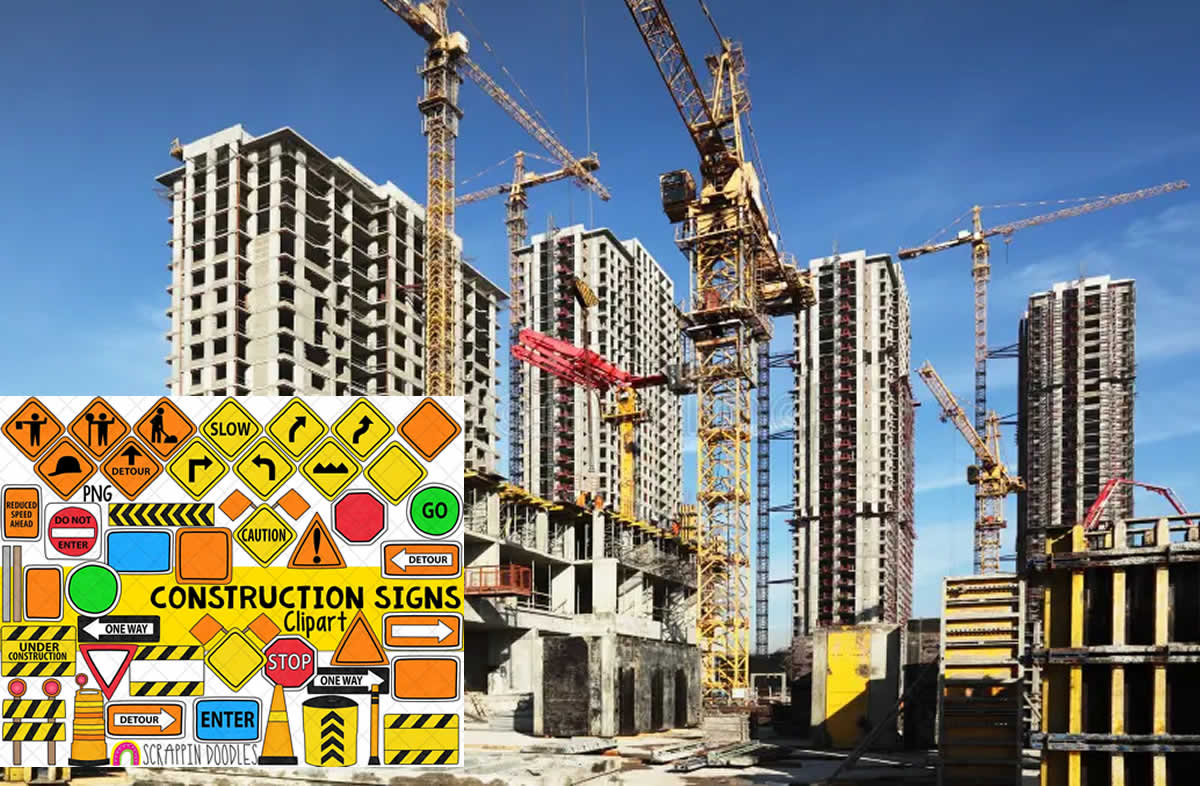Construction sites are bustling hubs of activity, often filled with potential hazards. Ensuring the safety of workers and visitors requires not only proper safety measures but also clear communication through safety signs. These signs serve as a critical layer of protection by warning about potential dangers and providing necessary instructions. Here, we explore the top safety signs commonly found on construction sites and their implications for maintaining a safe work environment.
1. Danger Signs
Implication: Immediate Hazards Danger signs are designed to alert workers and visitors to immediate threats that could result in serious injury or death. These signs often feature bold text like “DANGER” with accompanying graphics, such as high voltage symbols or falling object icons. They are placed in areas with severe risks, such as electrical panels, deep excavation zones, or areas with moving machinery. Adhering to these warnings is non-negotiable for safety.
2. Warning Signs
Implication: Potential Hazards While not as severe as danger signs, warning signs indicate potential risks that could lead to harm if not approached cautiously. These signs often use the word “WARNING” with symbols like slipping hazards or hazardous chemicals. Workers are advised to exercise care and follow safety protocols when in these areas to avoid accidents.
3. Mandatory Signs
Implication: Actions Required for Safety Mandatory signs instruct individuals on specific actions they must take to ensure safety, often displayed with a blue circle and white symbols. Examples include “Hard Hats Must Be Worn” or “Eye Protection Required.” These signs help enforce proper use of personal protective equipment (PPE) and other safety behaviors critical for minimizing risks.
4. Prohibition Signs
Implication: Restricted Actions Prohibition signs indicate behaviors or actions that are strictly forbidden in a particular area. Common examples include “No Smoking,” “Do Not Enter,” or “No Unauthorized Personnel.” These signs protect workers from engaging in activities that could compromise safety or violate site regulations.
5. Emergency Information Signs
Implication: Guidance in Emergencies Emergency information signs provide essential guidance during unexpected situations, such as fires or medical emergencies. They often highlight the locations of first aid kits, fire extinguishers, or emergency exits, usually marked in green. Quick access to this information can be life-saving in urgent scenarios.
6. Hazard Symbols
Implication: Risk Identification Hazard symbols, such as biohazard, toxic, or flammable material signs, are used to identify specific dangers related to substances or processes. Workers handling hazardous materials must be trained to understand these symbols and take appropriate precautions.
Why Are Safety Signs Important?
Safety signs play a vital role in promoting awareness, preventing accidents, and ensuring compliance with regulations. They:
- Enhance Communication: Provide clear, universally recognized instructions and warnings.
- Minimize Risks: Reduce the likelihood of accidents and injuries.
- Meet Legal Requirements: Compliance with safety standards helps avoid penalties and ensures a safe working environment.
Conclusion
Construction sites are inherently risky environments, but with the proper use of safety signs, these risks can be significantly mitigated. Understanding and adhering to the implications of each type of sign is crucial for protecting lives and maintaining a secure work environment. By fostering a culture of safety awareness, construction companies can prioritize the well-being of their teams and ensure the successful completion of projects. Remember to rent a mobile toilet while the construction is ongoing and to do post construction cleaning before people move into the home
Remember, safety starts with awareness, and awareness begins with clear communication through safety signs. Stay informed, stay safe!

